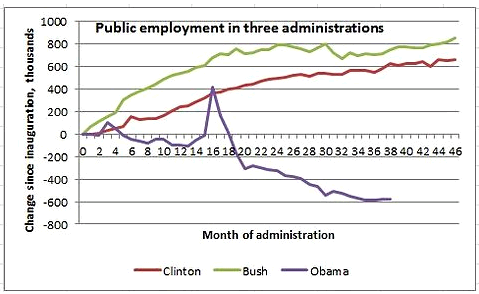A black mark on Morgan Stanley
By Rich Miller
April 30 (Bloomberg) — The U.S. and other developed economies with high public debt potentially face “massive” losses of output lasting more than a decade, even if their interest rates remain low, according to new research by economists Carmen and Vincent Reinhart and Kenneth Rogoff.
In a paper published today on the National Bureau of Economic Research’s website, they found that countries with debts exceeding 90 percent of the economy historically have experienced subpar economic growth for more than 20 years. That has left output at the end of the period a quarter below where it would have been otherwise.
“The long-term risks of high debt are real,” they wrote. “Growth effects are significant” even when debtor nations are able to borrow “at relatively low real interest rates.”
In spite of those dangers, the economists said they are not advocating rapid reductions in government debt at times of “extremely weak growth and high unemployment.”
Carmen Reinhart is a senior fellow at the Peterson Institute for International Economics in Washington, while her husband, Vincent, works as chief U.S. economist for Morgan Stanley in New York. Rogoff is a professor at Harvard University in Cambridge, Mass., and a former chief economist at the Washington-based International Monetary Fund.
Their paper looked at 26 separate episodes in 22 countries since 1800 in which central government debt exceeded 90 percent of gross domestic product for at least five years. Advanced economies with such big liabilities grew on average 2.3 percent a year, compared with 3.5 percent in the lower debt period, they said. The high-debt period on average lasted 23 years, according to the study.
U.S. Debt
Gross federal U.S. debt has exceeded 90 percent of GDP for the last two years and is projected to remain above that level at least through 2017, according to the White House’s Office of Management and Budget.
Publicly-held debt, which excludes debt held by the Social Security Trust Fund and other government agencies, was 68 percent of GDP on Sept. 30, 2011, the OMB data show.
The lower level of publicly held debt should not be a source of comfort to the U.S. and other heavily-indebted nations because such trust funds generally are “woefully underfunded,” the Reinharts and Rogoff argued in their paper.
They also cautioned the U.S. and other developed nations against taking solace from low levels of interest rates on their debt. The yield on the 10-year U.S. Treasury note stood at 1.92 percent at 3:15 p.m.
‘Warning Signal’
“Contrary to popular perception, we find that in 11 of the 26 debt overhang cases, real interest rates were either lower or about the same as during the lower debt/GDP years,” the economists wrote. “Those waiting for financial markets to send a warning signal through higher interest rates that government policy will be detrimental to economic performance may be waiting a long time.”
Greece and Italy were the two countries in the study that experienced the most instances in which their debt exceeded 90 percent of GDP.
The economists warned that nations with excessive government liabilities now may even fare worse than history suggests because their private and foreign debts also are large.
“The fact many countries are facing ‘quadruple debt overhang problems’ — public, private, external and pension — suggests the problem could be worse than in the past,” they said.
Carmen Reinhart and Rogoff are co-authors of the book “This Time is Different: Eight Centuries of Financial Folly.” Carmen’s husband, Vincent, is a former director of the monetary affairs division at the Federal Reserve in Washington.

